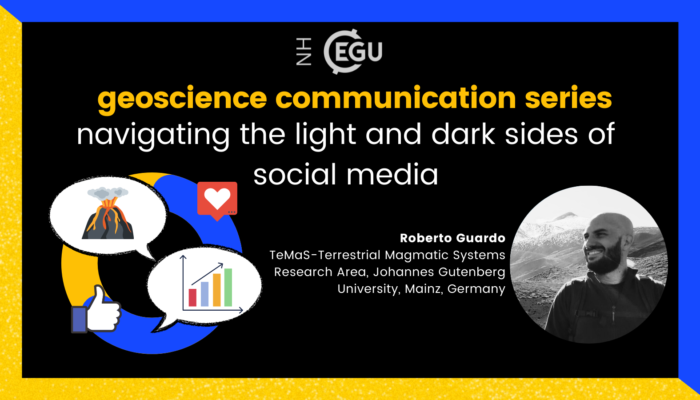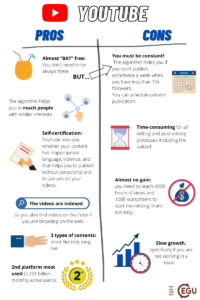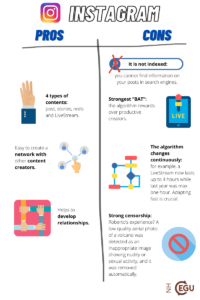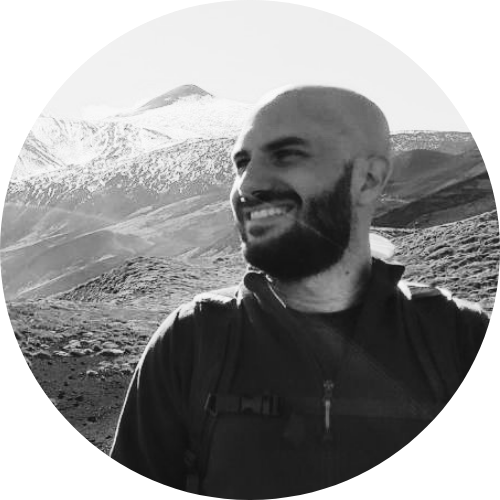
We are thrilled to present the last episode of the EGU WEBINARS: Digitalk: online (geo)science communication series. In this episode, we will explore the light and the dark sides of using social media for science communication by a special guest, Roberto Guardo.
Roberto wished to engage in science communication just after completing his PhD. “I have never liked writing scientific papers,” he said, “I like talking about science, and I thought that doing science communication would have been easy. Well, I was wrong”. Indeed, at the first stage, Roberto considered science communication as a Plan B to the “publish or perish” academic research policy. But suddenly, he had to move it to a Plan A to start enjoying and getting some positive feedback.
Of course, the path is not paved, as we have already seen for scientific blogging and vlogging in the previous episodes, but let us digest some tips for you to kick off social media (geoscience) communication!
The Golden Rules
One of the first things to consider when you approach social media communication is time. The required time effort depends on the specific platform you are using. Indeed, each platform has some specificities, and therefore you need to adapt your content to each one of them. How to choose the perfect social media platform? Well, it depends on several factors like the nationality of the users, visibility, sponsorship, magnitude of users connected, monetisation, etc. Still, before exploring all the pros and cons of some of the most famous social media platforms, Roberto provides us with 3 golden rules that apply to all the platforms, despite your preferences!
-
BAT: Be Always There
BAT is the first and harder golden rule. Algorithms in social media platforms are used to sort posts based on their relevance instead of the publish time. For example, algorithms are used to determine the suggested posts when you scroll through your Instagram feed or the posts of some of your contacts that appear first on the Facebook dashboard. Therefore, algorithms are enemies that will work against you if you are not constant in your publishing.
-
People and (their) time are limited
The second rule regards the battle for the audience’s attention. There are a lot of content creators out there, so you need to deliver something original and in a rapid sequence to win the battle and capture the audience’s attention.
-
Spell the name to become a shadow
Never say the name of another social media platform while sharing content with another one. On one hand, people might be distracted and stop following your content. At the same time, algorithms may hide your content too. So, one wrong move, and you become a ghost.
The light and dark sides of social media
There are a lot of stats about social media available online, but no one talks about science communication. Roberto has tried to make it up by sharing the pros and cons of YouTube, Instagram, Facebook and Twitch. Here they are, presented through a series of infographics!




Be Yourself
Sometimes social media nurtures relationships and supports the development of meaningful communities of people. Other times, social media asks us to change and confront a reality that obligates us to endorse others. We often suffer from the comparison because we fear ourselves being unable to measure up. Of course, it’s not all bad if we are ourselves. This is especially true when we use different social media platforms for sharing our scientific content. Moving from one platform to another we may feel we need to change everything. But it’s less about the platform and more about adapting the format and style of communicating to the community and audience we are talking to without losing our personality.
About Roberto
 Roberto Guardo is a geophysicist and volcanologist with strong experience in GIS applications for volcanic hazard monitoring. In 2020 he obtained a PhD in volcano seismology in Argentina, a land that truly inspired his research work. From his interest in science communication, he developed a series of videos regarding volcanoes shared among the most popular social media channels, YouTube, Facebook, Instagram, and Twitch, under the acronym “GuardoVulcani”. This acronym, which comes from his surname, literally translated means “Looking volcanoes”. That’s a catchy message!
Roberto Guardo is a geophysicist and volcanologist with strong experience in GIS applications for volcanic hazard monitoring. In 2020 he obtained a PhD in volcano seismology in Argentina, a land that truly inspired his research work. From his interest in science communication, he developed a series of videos regarding volcanoes shared among the most popular social media channels, YouTube, Facebook, Instagram, and Twitch, under the acronym “GuardoVulcani”. This acronym, which comes from his surname, literally translated means “Looking volcanoes”. That’s a catchy message!
Follow Roberto (italian language only, for now) on:
YouTube: youtube.com/c/GuardoVulcani
Twitch: twitch.tv/guardovulcani
Instagram: instagram.com/guardovulcani/
Post written by: Giulia Roder and Silvia De Angeli
Post edited by: Asimina Voskaki and Valeria Cigala
